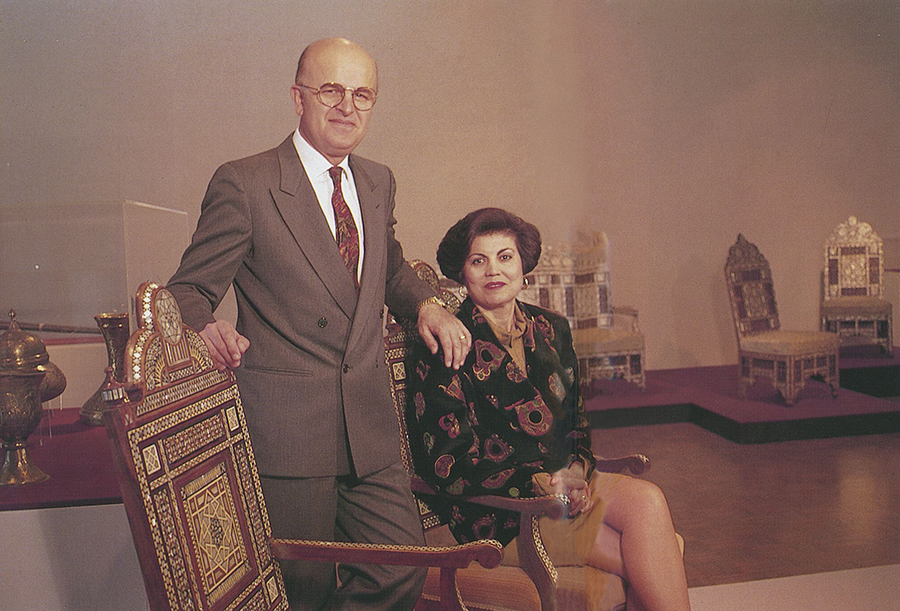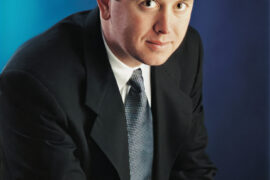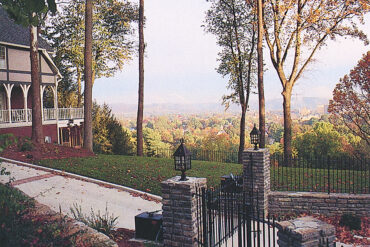Touma family donates rare Near Eastern collection to Huntington Museum of Art
By Sara Leuchter Wilkins
HQ 11 | SPRING 1992
For the past 20 years, ear specialist Dr. Joseph B. Touma has helped thousands of Huntingtonians to more clearly hear the sounds of his adopted city. And with the recent gift of the family’s Near Eastern art collection to the Huntington Museum of Art, Touma will enable countless generations to be visually stimulated as well.
The Toumas’ priceless collection of Near Eastern furniture, prayer rugs, Orthodox Christian icons, hand-hammered metalwork, illuminated manuscripts, and Roman and Greek antiquities is their gift of love to the city that opened its doors to them some 21 years ago.
Both Touma and his wife, Omayma, were born in Damascus, Syria, where they met as medical students. During post-graduate training in the United States – he in otolaryngology and she in pediatrics – they lived briefly in Detroit and Memphis. When the time came for them to begin their practices, the family undertook an arduous and extensive search for the perfect community. According to Omayma, “we visited 16 cities and Huntington was the last one. We made our decision that same night.” The Toumas cited the city’s location, size, layout, excellent hospitals, notable museum, and university affiliations as compelling reasons to settle here.
The Toumas have long been solid supporters of the Huntington Museum of Art. “The museum struck us from day one, 21 years ago, as an outstanding institution,” noted Touma. “It brings culture right here in our midst through our permanent collections and visiting exhibits, and more importantly, through active educational programs for children and adults. It is the focal point of art and culture for the entire area,” he continued.
Touma served for at least eight years on the museum’s board of directors, including chairmanship of the collections committee. “The beauty of that experience was that I got to know the depth and the richness of the collections, and we knew that our own collection would be in good hands,” Touma said.
The Toumas, who started collecting Near Eastern art about 18 years ago because they were fascinated by it, became savvy and skillful – even compulsive – collectors. They were determined to buy only museum-quality pieces, which they discovered on numerous trips to the Middle East or bought from reputable auction houses such as Sotheby’s and Christies. “Many of the pieces are rare and were painstakingly chosen,” noted Omayma.
The collection grew rapidly, overflowing rooms and storage areas in the Toumas’ home. Their decision in 1989 to donate it to the museum was a natural one, especially since they wanted to keep the collection intact. “Still, it was difficult to part with it,” admitted Touma.
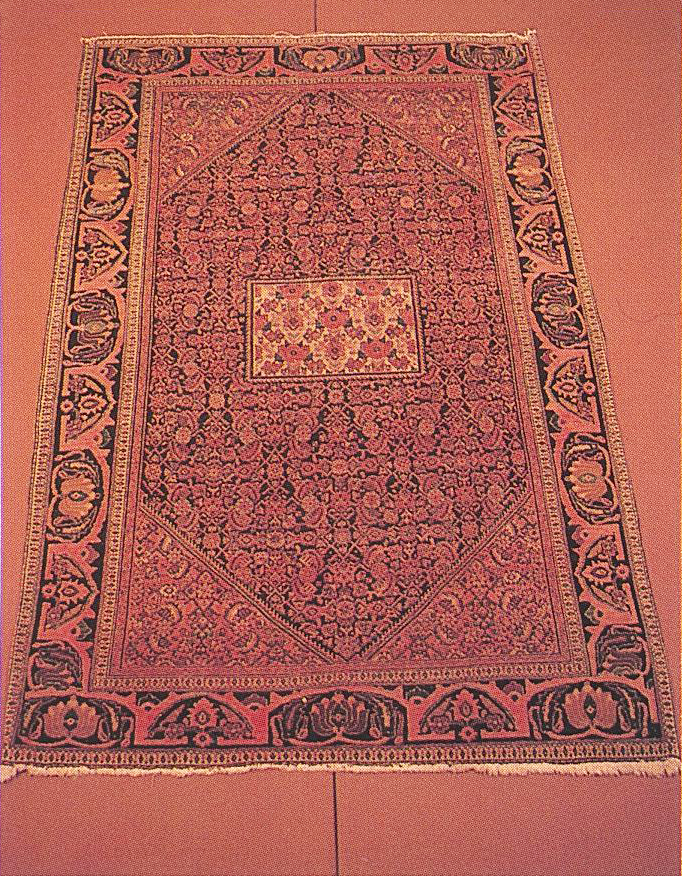
It took more than two years for museum staff to catalogue and organize the collection, and when it opened officially in November 1991, the collection catapulted the museum into some elite company. According to Tom Butler, director of the museum, one of the first and most impressive gifts to the museum was the Fitzpatrick prayer rug collection, donated in 1952.
“The Touma addition now gives a context to the Fitzpatrick rugs and puts a new focus on our Near Eastern collection,” he said. “Only a very limited number of collections in this country have the richness of our textiles collection, especially in the area of antique prayer rugs. I’d say that we are comparable with museums in Washington D.C., Philadelphia, Chicago, and San Francisco.” In fact, the Fitzpatrick and Touma prayer rugs are now on national tours to such places as Santa Ana, Calif., Naples, Fla., and New York City.
The Toumas’ Near Eastern art collection falls into seven distinct areas. The furniture, which is rare and extremely valuable, is mainly inlaid mother of pearl; some is hand-carved and more than 150 years old. The furniture includes four chairs, a sofa, and a table.
The prayer rugs constitute a major part of the collection. Numbering about 20 and dating as far back at 1710, they come from Persia, Turkey, and from the southern part of the former Soviet Union.
The rugs vary in size from 2×4 feet to 3×5 feet, and are richly woven with illustrations of animals, flowers , trees of life, clouds, and arches that face eastward to the Moslem holy city of Mecca.
The 10 Orthodox Christian icons consist of Greek and Russian paintings depicting the Holy Family and feasts. Although they date mainly from the 19th century, the oldest is from the 18th century.
Other religious items include woodcarvings and an ivory-carved medallion featuring a scene of the Last Supper.
The hand-hammered metalwork consists of copper or brass pieces with silver overlays, some as old as the 16th and 17th centuries. Specific items include Turkish swords with ivory handles and numerous daggers.
The illuminated manuscripts are handwritten books ranging from a 200-page Koran to medical texts to meditation and prayer books. Of particular note are a Hindu prayer book with 24 hand-painted illustrations and a 1544 Bible in old Greek.
The Roman and Greek antiquities consist of glass, pottery, small statues, and bracelets, some dating from the period 3000 BC to 400 AD and unearthed during archaeological digs.
There are also a few 19th and 20th century paintings, notably two that represent the interests of European artists in the Near East.
Eason Eige, chief curator at the museum, is exuberant over the Touma collection. “The collection brings this museum an entirely new and important aesthetic history,” Eige said. “Like other museums, we have emphasized European and Far Eastern cultures, but Near Eastern art has been less known to audiences in the United States and is becoming more important in light of current events.”
The Touma gift, he explained, extends the Fitzpatrick prayer rug collection both historically and culturally. Further, the icons bring the museum into an entirely different area of orthodox religious paintings.
Finally, Eige noted, the books and illustrated manuscripts are the rarest in the collection and of the highest quality. “It’s a wonderful beginning for us,” Eige said, “especially because when you have good art within a given category, donors are more apt to add to it.”
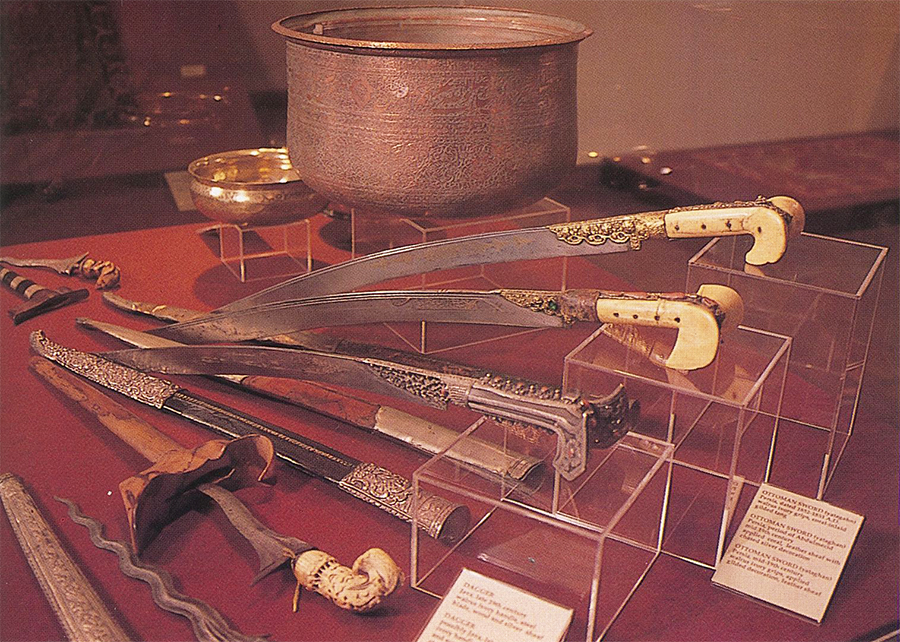
Eige noted that in December the museum will mount an exhibit of icons starting with the Touma collection and borrowing from religious institutions in West Virginia and Pennsylvania, as well as from private collectors.
Touma believes that when the museum expands in the future, there will be a Near Eastern Gallery. Tom Butler concurs. “I certainly feel that the depth of our textiles collection now warrants such a space.”
A second cause championed by the Toumas is Marshall University. “We think that Huntington is a much better place to live in because of Marshall,” Touma said. “We are both members of the John Marshall Society, the Big Green, and the Quarterback Club, and I have served on the MU Foundation Board.”
Touma also teaches at the Medical School, where he is professor and coordinator of the Ear, Nose and Throat Department.
Last year, Touma was president of the Cabell County Medical Society and from 1989-90, he served as chief of staff at St.Mary’s Hospital. Omayma is greatly involved in Habitat for Humanity’s annual Hoedown, which occurs each fall.
Touma also has some real estate investments including the Fairfield Building and several projects downtown.
“I believe in investing in your own community because it is economically rewarding and good for the citizens,” he said.

The Toumas, who are avid travelers, take one major trip within West Virginia each year. “There are some absolutely gorgeous parts in the state which are perfect for hiking and exploring,” noted Omayma.
The couple has two children: B. Joseph, a second-year medical student at WVU; and Mona, a freshman at Georgetown University.
Touma is excited about Huntington’s future.
“I think that the city will witness slow but steady growth,” he said. “I’m optimistic in the long run. We are in the right location, we are the right size, and we have the right ingredients for good things: Marshall, the museum, and the wonderful people in Huntington. “We are just waiting to be rediscovered.”

